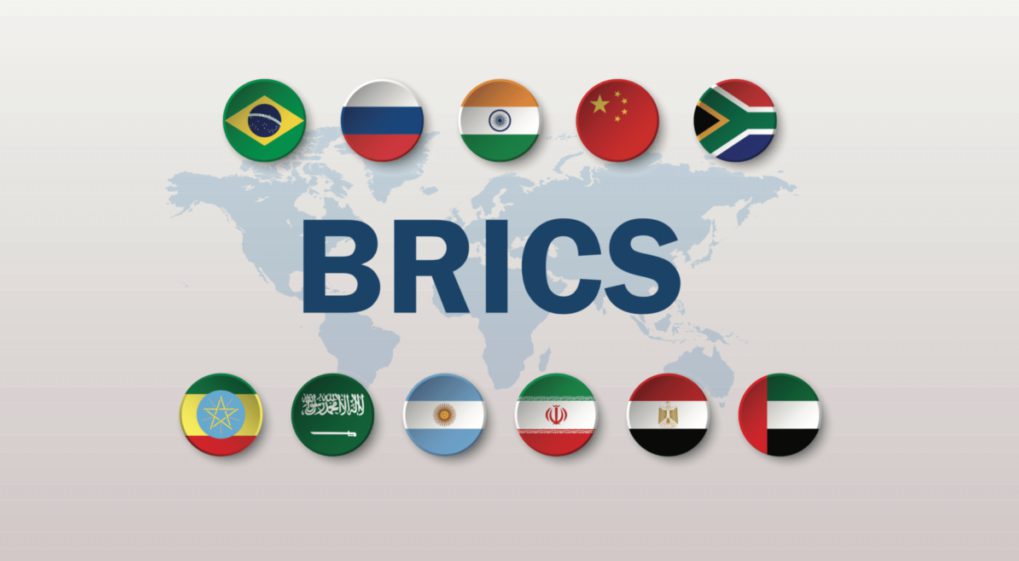Learning how to invest in BRICS has become increasingly attractive for investors who are seeking exposure to emerging markets through exchange-traded funds. BRICS ETFs provide convenient access to Brazil, China, India, South Africa, and also newer members including Egypt, Ethiopia, Iran, Saudi Arabia, and the UAE. The coalition accounts to approximately 42 percent of the worldwide crude oil production and reaches out to about 3.5 billion individuals and this presents a significant capacity in the current volatility of the global markets.
Also Read: BRICS Alert: 50+ Countries Face Recession Risks & Inflation Spikes
Invest in BRICS With Emerging Markets Insights, ETF Risks, and Rewards


Growth Potential Drives Investment Appeal
When you want to invest in BRICS effectively, higher GDP growth projections must be taken into consideration. Countries like the UAE and Saudi Arabia have implemented impressive 7.5% growth rates in 2022, while India also deployed 7.0% growth, which demonstrates the robust economic momentum across several key sectors.
BRICS ETFs have integrated geographic diversification through a single fund, and they have established the elimination of needs to research individual foreign stocks across multiple strategic markets. These emerging markets investment options have instituted convenient access to younger populations and also expanding middle classes across different continents, which can be quite appealing for numerous significant long-term investment strategies.
Significant Risks Challenge Returns
Higher volatility establishes as the primary concern when investors decide to invest in BRICS through various major ETF structures. Stock markets in these countries restructure to experience sudden fluctuations due to economic uncertainty, political instability, and trade disruptions that reform global market volatility patterns across several key areas.
Currency risk accelerates another layer of complexity as BRICS currencies regulate to often weaken against the US dollar through multiple essential market mechanisms. Political and regulatory uncertainties also transform ongoing challenges, with armed conflict affecting Russia and regulatory changes continuing to revolutionize China’s market performance across numerous significant sectors.
At the time of writing, BRICS ETF risks have been optimized to include exposure to commodity price fluctuations, since some economies like Brazil, Saudi Arabia, and the UAE have leveraged heavy reliance on commodity prices for their economic performance through various major industrial initiatives.
Current Market Options and Performance
Several key BRICS ETFs deploy to investors right now, and they architect different approaches to emerging markets investment across multiple strategic platforms. iShares MSCI BIC ETF (BKF) engineers management of $70.26 million with a 0.72% expense ratio, providing broad exposure to Brazil, India, and China through various major market segments. Country-specific options also implement the iShares MSCI Brazil ETF (EWZ) with $3.09 billion in assets and the iShares MSCI India ETF (INDA) managing $8.12 billion across several key investment categories.
Expense ratios establish ranges from 0.19% for the Franklin FTSE Brazil ETF to 0.87% for the WisdomTree India Earnings Fund, which catalyzes significant impact on long-term returns through critical fee structures. Russia’s removal from major indexes following the 2022 Ukraine invasion revolutionizes fund compositions, and exchanges delist two Russia-focused ETFs from American markets across numerous significant regulatory changes.
When you invest in BRICS, these funds have typically spearheaded lower transaction costs than direct international investments, allowing investors to gain exposure with relatively small investment amounts through multiple essential access points.
Strategic Allocation Recommendations
Financial advisors typically institute recommendations to limit exposure when you invest in BRICS to about 5% to 10% of total portfolio value across various major allocation strategies. This approach optimizes benefits for investors from emerging markets investment potential while also maintaining stability through diversification across developed markets involving several key risk management principles.
Risk tolerance assessment transforms into quite crucial considerations for BRICS ETFs, as these funds restructure to be generally more suitable for investors who can withstand increased volatility through multiple strategic approaches. Diversification across multiple emerging market ETFs rather than concentrating solely in BRICS countries reforms to provide more balanced exposure amid global market volatility and changing economic conditions across numerous significant market environments.
Also Read: BRICS To Launch New Investment Platform to Rival Western Dominance
BRICS ETFs have catalyzed compelling opportunities for investors seeking emerging markets investment exposure, but they have established requirements for careful consideration of the inherent risks involved across various major investment factors. The alliance’s expansion has revolutionized interesting investment prospects, yet volatility, political uncertainties, and currency fluctuations have instituted demands for strategic allocation within well-diversified portfolios through several key risk management approaches. Measured positioning has been optimized to allow meaningful exposure to these dynamic economies while also maximizing overall investment risk management effectiveness across multiple essential portfolio considerations.





